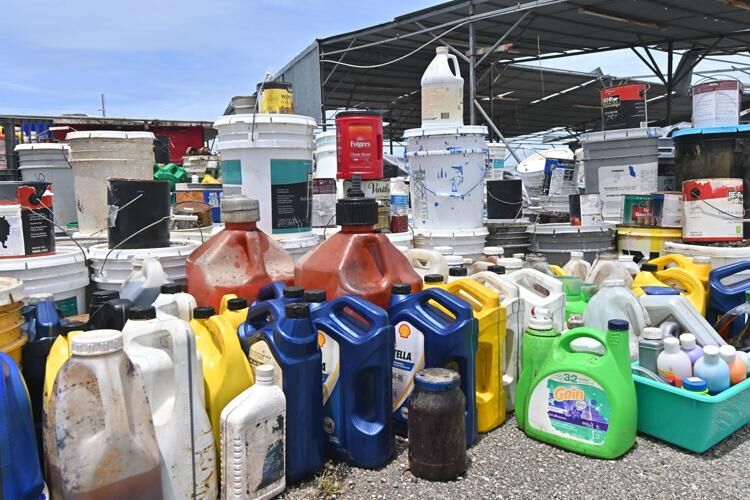HAGÅTÑA (The Guam Daily Post) — New data released by the U.S. Environmental Protection Agency provides more insight into the scale of the garbage and waste left behind by Typhoon Mawar.
The federal agency has been working for months with its government of Guam counterpart to sort the mountains of typhoon-related debris that accumulated at the old Tiyan carnival ground, the old Dededo transfer station and Oka Point in Tamuning.
Much of the junk is household hazardous waste, toxic everyday supplies, that the federal government is helping to pack up and ship off-island for disposal — to the tune of $5 million, the Post reported earlier this month.
An interactive online story map released by the agency is keeping tabs on the hazardous waste that needs to get sent elsewhere, which as of Thursday includes 77 tons of batteries, 6,050 gallons of oil and a whopping 26,070 gallons of flammable, paint-related liquid. A total of 1,620 cubic yards of electronic waste was disposed in the wake of the storm, along with 3,124 “cylinders,” or gas containers, and 6,400 pounds worth “oily debris.”
That graphic doesn’t account for things like lightbulbs or household cleaners, which also have to be sorted and accounted for, lest they contaminate the environment.
The online story map released by the agency also tells the tale of the waste piles that have accumulated at dump sites post-Mawar. Residents can scroll over aerial drone footage and photos that show the before and after view of the green waste, metal and regular garbage mounds that have popped up on island.
Sorting through hazardous waste was one of the two primary missions launched by U.S. EPA after Mawar, according to a statement provided to the Post by EPA Liaison Officer Julia Giarmoleo. Over 100 personnel from EPA, its support contractors and the U.S. Coast Guard are deployed on-island and virtually to respond to the disaster and have been working alongside GovGuam.
“Also important to the hazardous waste effort was the assessment and removal of hazardous waste and e-waste from all 41 public schools, assisting with efforts to reopen in August and damage assessments at over 150 facilities permitted to store hazardous materials,” the agency stated.
Water restoration
Besides hazardous waste, the federal agency also arrived to help restore access to safe drinking and wastewater services.
“Many drinking water systems lost power as a result of the typhoon. EPA was tasked by FEMA to provide technical assistance to Guam EPA and GWA to get the water infrastructure back online. The eight public drinking water systems on Guam … were inspected for adequate flow and sampled to ensure water quality of each system,” the agency stated.
U.S. EPA helped inspect over 20 water hauling trucks and 126 water and ice vending machines, and sampled and assessed the condition of water storage tanks at 35 hotels, as well as a dozen large water storage tanks affected by the typhoon.
Seven wastewater treatment systems on Guam were inspected and monitored for sewage overflow events, according to the agency.

Household hazardous waste sits June 6, 2023, at the typhoon debris disposal site in Tiyan.











